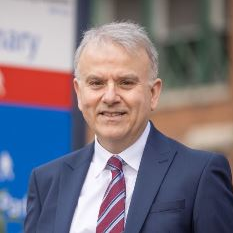Latest Clinical And Basic Science Advances In Bone Regeneration
A special issue of Journal of Clinical Medicine (ISSN 2077-0383). This special issue belongs to the section "Orthopedics".
Deadline for manuscript submissions: closed (31 December 2019) | Viewed by 20786
Special Issue Editor
Interests: pelvic instability; pelvic reconstruction; non-union; bone regeneration; post fracture fixation complications
Special Issues, Collections and Topics in MDPI journals
Special Issue Information
Dear Colleagues,
One of the amost important complications post fracture fixation continues to be an impaired fracture healing response leading to non-union. Non-union, delayed union, bone voids, bone defects, and avascular necrosis represent different clinical expressions of the problem.
The incidence of non-union depends on patient characteristics, severity of injury, location of injury, and method of treatment applied. Different rates have been reported in the literature ranging from 1 to 30%. In the United States, for instance, at least 100,000 procedures of non-union per year have been recorded.
While this phenomenon is considered to be multifactorial, dysfunction in the biological component of the evolution of the bone repair process has been reported to affect angiogenesis, the osteogenic matrix, osteoprogenitor cells, presence and potency of inductive molecules, availiability of molecular mediators, and defects in the local immunoregulation environment.
Different strategies have been implemented to provide solutions to this clinical complication, including cellular therapy treatment, implantation of growth factors and scaffolds, autologous bone grafting, and combinatory approaches in general within the context of tissue enginnering.
In this special issue focusing on bone regeneration, both clinical and basic science manuscripts are invited to be submitted. The overarching objective is to gather and to disseminate the latest advances made in terms of the aetiopathogenesis and treatent modalities of this unique clinical entity to the scientific community.
Prof. Dr. Peter V. Giannoudis
Guest Editor
Manuscript Submission Information
Manuscripts should be submitted online at www.mdpi.com by registering and logging in to this website. Once you are registered, click here to go to the submission form. Manuscripts can be submitted until the deadline. All submissions that pass pre-check are peer-reviewed. Accepted papers will be published continuously in the journal (as soon as accepted) and will be listed together on the special issue website. Research articles, review articles as well as short communications are invited. For planned papers, a title and short abstract (about 100 words) can be sent to the Editorial Office for announcement on this website.
Submitted manuscripts should not have been published previously, nor be under consideration for publication elsewhere (except conference proceedings papers). All manuscripts are thoroughly refereed through a single-blind peer-review process. A guide for authors and other relevant information for submission of manuscripts is available on the Instructions for Authors page. Journal of Clinical Medicine is an international peer-reviewed open access semimonthly journal published by MDPI.
Please visit the Instructions for Authors page before submitting a manuscript. The Article Processing Charge (APC) for publication in this open access journal is 2600 CHF (Swiss Francs). Submitted papers should be well formatted and use good English. Authors may use MDPI's English editing service prior to publication or during author revisions.
Keywords
- Bone regeneration
- Non-union
- Growth factors
- Osteoprogenitor cells
- Scaffolds
- Tissue engineering






